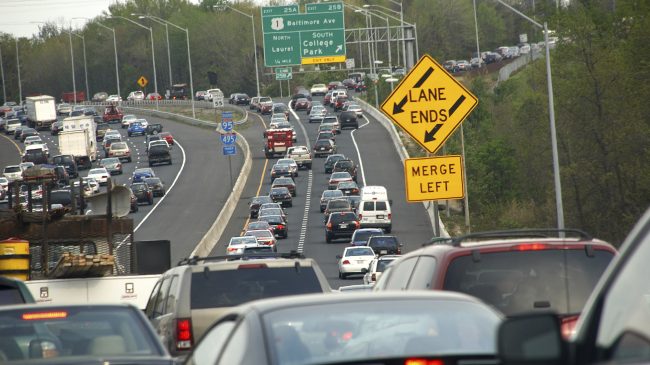A day earlier this week, Nov. 12, 2019, should go down in history as a major milestone for 21st-century transportation. On that date, the governors of Maryland and Virginia announced an agreement to rebuild the aging, inadequate American Legion Bridge across the Potomac River, enabling the completion of America’s largest region-wide network of express toll lanes.
Over the past decade, Virginia has been a leader in adding variably-priced express lanes to all major freeways in Northern Virginia, I-66, I-395, the I-495 Beltway and I-95. Until Larry Hogan became its governor, Maryland had lagged far behind. But last year, Gov. Hogan announced a plan to add similar express toll lanes to the Maryland portion of the Beltway, plus the I-270 freeway, at an estimated cost of $9 billion. Following Virginia’s example, most of the costs would be financed by the private developers/operators based on the toll revenue generated by the express lanes.
But there was a major problem this plan left unresolved: the American Legion Bridge.
Virginia’s latest plan approved extending its Beltway express lanes up to the bridge, but not onto it, since the bridge is owned by Maryland. Hogan’s plan envisioned doing something about the bridge eventually, but transportation experts pointed out that it made little sense to promise congestion relief while the bridge remained one of the largest traffic bottlenecks on the east coast. It made far better sense to fix the bridge first, or simultaneously with adding express lanes on either side of it.
Fortunately, that good sense led to the bipartisan Capital Beltway Accord, signed on Nov. 12 by Virginia Gov. Ralph Northam (D) and Maryland Gov. Larry Hogan (R). The two states will share the cost of replacing the 10-lane bridge (eight general-purpose lanes and two auxiliary lanes) with a 14-lane one: the same existing lanes each way plus two express lanes in each direction. And like the other express lanes projects in both states, this one will also be developed as a long-term public-private partnership largely financed based on the toll revenues generated.
Altogether, this set of additional projects should provide a seamless express toll network on the DC metro area’s highway system, currently ranked as the nation’s third-most congested metro area by the Texas A&M Transportation Institute. The region’s traffic delays cost the average commuter $1,840 per year in wasted time and fuel. Achieving a region-wide express lanes network has been a goal of the Greater Washington Partnership and the Greater Washington Board of Trade, who sponsored the transportation forum at which the two governors announced the historic agreement.
Expanding or replacing the bridge has also long been a goal of transportation experts, but the two states had never come close to an agreement, as they had two decades ago to replace the Woodrow Wilson Bridge on the Beltway’s eastern crossing of the Potomac. One of the problems was strong support in Maryland for a rail transit link at, or near, the American Legion Bridge, for which no funding was available. Fortunately, the Capital Beltway Accord creates the basis for bi-state bus rapid transit (BRT) service. Variably-priced express lanes function as virtually exclusive busways since the price charged to drivers is aimed at keeping traffic flowing at a reasonable speed even during the busiest rush hours. Express bus service is already extensive on the I-95 express lanes in Virginia and will be an integral part of the under-construction express lanes on I-66 outside the Beltway. It should be a no-brainer for transit providers in both states to plan such services for the new bridge’s express toll lanes.
These plans are also a major step forward for toll-financed public-private partnerships. In metro areas with high levels of congestion, investor-financed express lane projects are getting investment-grade bond ratings. Since most of these projects are relatively new, most have BBB ratings—investment-grade but just barely. The very first such project, which opened 24 years ago on SR 91 in California, has stood the test of time and now holds an A+ rating. Given this track record, along with the DC metro area’s very high congestion levels, there should be significant investor interest in this new set of projects.
On a sad note, the person who laid the basis for what became the Capital Beltway Accord, Shirley Ybarra, passed away on Nov. 10. When she served as Virginia’s deputy secretary of transportation, Ybarra authored the state’s Public-Private Transportation Act (PPTA), which served as the prototype for similar enabling acts in dozens of other states. The PPTA made possible the Beltway, I-95, I-395, and I-66 express lanes projects. And during her tenure as Virginia’s secretary of transportation, Ybarra worked with the Maryland State Highway Administration’s Neil Pedersen to develop the Woodrow Wilson Bridge project. Until her retirement several years ago, Shirley was a valuable member of the Reason Foundation transportation team. She will be missed.

